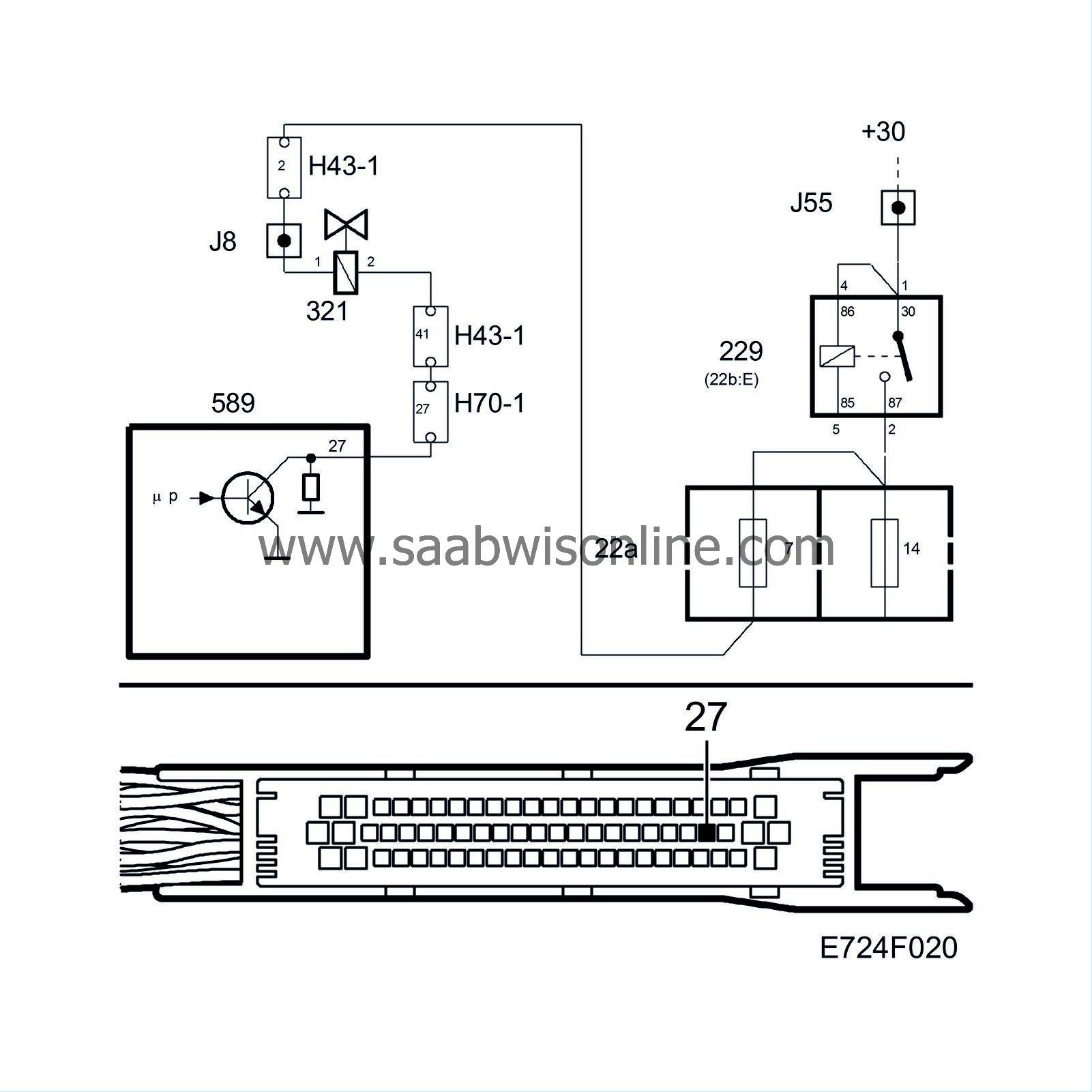P0445
Read the instructions below then
start the fault diagnostic procedure.
Symptom: CHECK ENGINE.
Possible smell of petrol.
EVAP Purge Valve Circuit. Short to B+.

Fault symptoms
|
•
|
Possible smell of petrol.
|
On-Board Diagnostics
Type of diagnosis:
|
-
|
Continuous. However, it is interrupted once the fault criteria have been fulfilled and does not restart until the next driving cycle.
|
Enable criteria:
(Conditions that must be fulfilled for diagnostics to be performed.)
|
-
|
Engine running. Main relay voltage exceeding 10V. Output is active.
|
Fault criteria:
(When enable criteria have been fulfilled, diagnostics will check if the fault criteria have been fulfilled.)
|
-
|
Output voltage exceeding 2V. Conditions fulfilled within 10 periods that must occur within 60s. (It normally takes 1s for the diagnostic trouble code to be generated.)
|
Dependents:
(Once fault criteria have been fulfilled, a number of other diagnostics must report OK before the diagnostic trouble code can finally be generated.)
System reaction to a fault:
(Once the fault criteria have been fulfilled, certain measures will sometimes be taken.)
OK report:
(This diagnosis may be included as a dependent to another diagnosis and must therefore report OK even if it is continuous. The OK report is also used in fault handling to count down the fault counter.)
|
-
|
Enable criteria fulfilled. Fault criteria not fulfilled within 60s.
|
Fault handling:
(Refer to section “Fault diagnosis, general” for more information.)
Diagnostic help
Fault diagnosis concerns an electrical fault in the connecting leads or in the valve.
Diagnostic tool functions related to this fault:
|
•
|
Activation of the output for the valve.
|
Refer also to the description of activations under ”Fault diagnosis, general” for more information.
Check the wiring
Jiggle the wiring harness at several points and in different directions to check if there are intermittent breaks and short-circuits in the leads. Observe the multimeter, test lamp or diagnostic instrument during the test.
See
 .
.
 .
.



